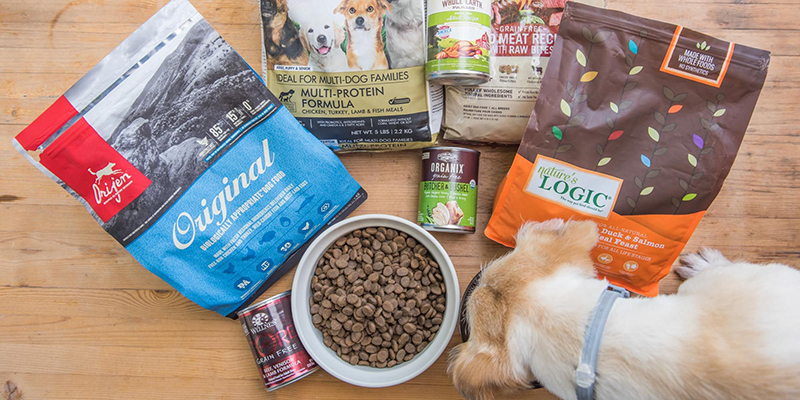Selecting the right dog food is like going grocery shopping, where you are blindfolded. Kibble or canned? Grain-free or not? What is even a "chicken meal"? If these questions keep you up, have no fear: you are not the only one.

Your dog's health begins with what you feed him; thus, selecting the food for your dog is more than just taking the brightest bag from the shelf.
Now, it's time to look at how you can find the right food for your dog to feed on.
Before you can figure out how to choose dog food, let's get one thing straight: there is a difference between different types of dog food. An ideological high-five contains nutrients, while another does not; you better not take a deep look.
We help you differentiate between pet foods because choosing dog food can be daunting.
No two dogs are the same. What fuels the playful energy of a Labrador puppy won't work the same for an ageing Dachshund. Determining your pet's needs is the starting point when searching for good dog food.
Dogs in different categories, such as puppies, adult dogs, and seniors, need different feeds. Puppy dogs have unique nutritional necessities for proper development, requiring foods with high-calorie content and nutrients. On the other hand, dogs in their old age require foods that help them maintain the health of their joints and organs.
Small breed dogs should consume foods formulated with lots of calories per cup but in small quantities; large breed dogs should consume foods that can ensure their joint health and prevent cases of rapid weight gain.
A Border Collie who bays non-stop will require more protein and calories than a Bulldog who probably spends most of his time on the sofa.
One of the key points of understanding a healthy dog diet is the ingredients list, which is your guide. Here's what to look for—and what to avoid:
The first one should always be meat. This means that a directory search for 'meat by-products' will not give the same results as a directory search for 'chicken' or 'beef.'
Sweet potatoes, brown rice, and oats are good sources of energy. Avoid staple grains such as corn and wheat.
Chicken fat or fish oil should be ingested as they provide them with overall good health. Avoid Artificial Additives:
To begin with, they do not include cyclic synthetic colours, flavours, or preservatives in their food.
Every brand is unique, meaning that every brand is not the same. Some producers take extra measures to provide the best, and some try to produce substandard products. As with any product, research and seek out companies that use high-quality ingredients and are stripped of any nutritional value.

The Association of American Feed Control Officials guarantees that the food meets the bare minimum nutrient profile.
Reliable brands reveal their sources and look for ways to create better products. Consider Specialized Options:
Certain brands have special requirements for their product, such as hypoallergenic diets or grain-free formulations.
The wet vs. dry debate is as old as time—or at least as old as kibble. Here's the lowdown:
Kibble is popular because it is convenient, affordable, and good for dental health. Just make sure it's high-quality and free from unnecessary fillers.
Canned food is one of the top dog food options for picky eaters or dogs who need extra hydration. It is higher in moisture and often more palatable.
Pro Tip: A mix of both can give your dog the best of both worlds.
The best dog foods will not work if your dog consumes more or less food than necessary. Always read the feeding instructions on the package, but do not forget that such directions are given as average recommendations.
Choosing the right dog food is more than just picking a bag from the shelf—it's about understanding your dog's unique needs and providing them with the nutrition they deserve. By paying attention to factors like age, size, activity level, and ingredients, you can make informed decisions that support your pet's health and happiness. Take the time to research brands, balance wet and dry options, and manage portions to ensure your furry friend thrives. A little effort goes a long way in keeping your dog healthy, happy, and energetic, ready to share their love and loyalty daily.